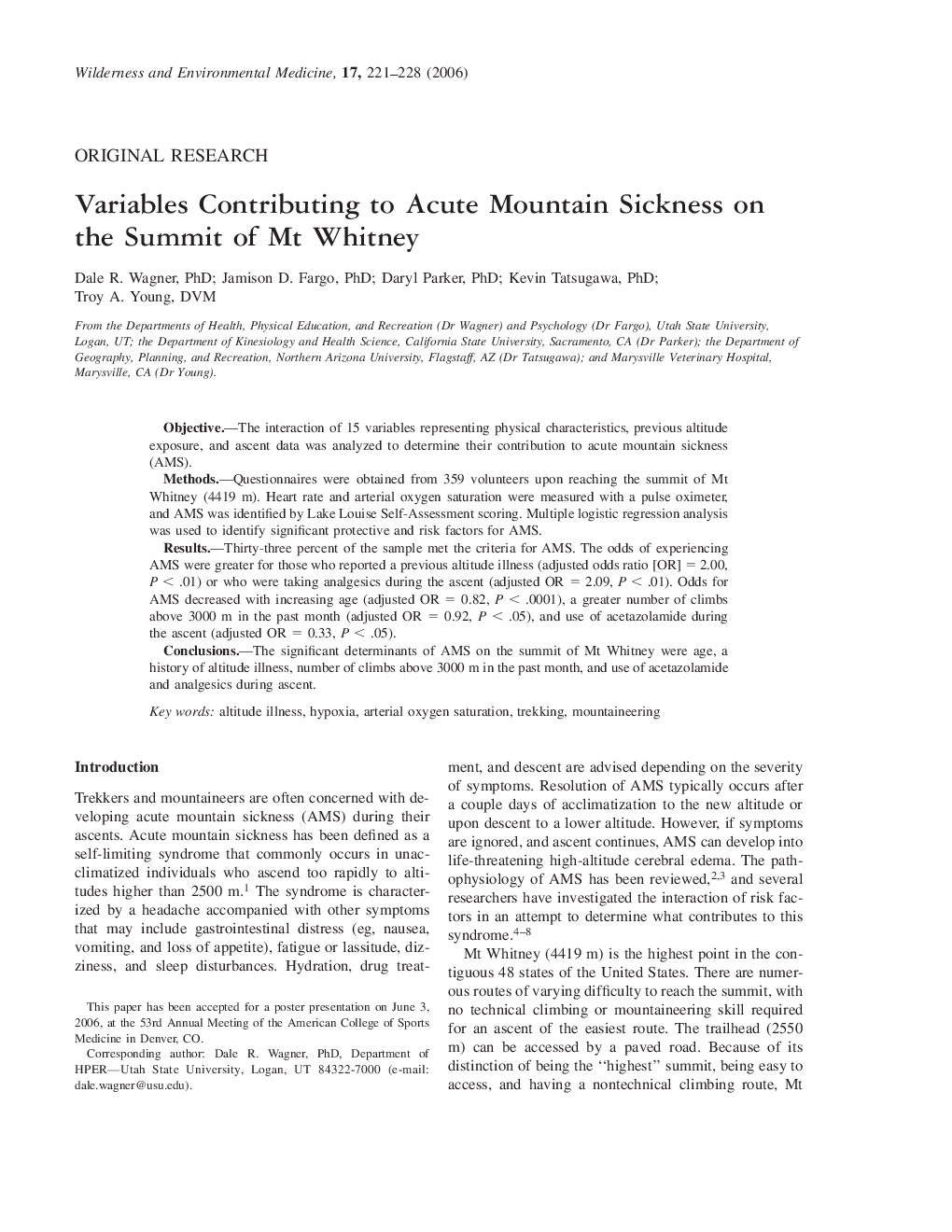| Article ID | Journal | Published Year | Pages | File Type |
|---|---|---|---|---|
| 2614666 | Wilderness & Environmental Medicine | 2006 | 8 Pages |
ObjectiveThe interaction of 15 variables representing physical characteristics, previous altitude exposure, and ascent data was analyzed to determine their contribution to acute mountain sickness (AMS).MethodsQuestionnaires were obtained from 359 volunteers upon reaching the summit of Mt Whitney (4419 m). Heart rate and arterial oxygen saturation were measured with a pulse oximeter, and AMS was identified by Lake Louise Self-Assessment scoring. Multiple logistic regression analysis was used to identify significant protective and risk factors for AMS.ResultsThirty-three percent of the sample met the criteria for AMS. The odds of experiencing AMS were greater for those who reported a previous altitude illness (adjusted odds ratio [OR] = 2.00, P < .01) or who were taking analgesics during the ascent (adjusted OR = 2.09, P < .01). Odds for AMS decreased with increasing age (adjusted OR = 0.82, P < .0001), a greater number of climbs above 3000 m in the past month (adjusted OR = 0.92, P < .05), and use of acetazolamide during the ascent (adjusted OR = 0.33, P < .05).ConclusionsThe significant determinants of AMS on the summit of Mt Whitney were age, a history of altitude illness, number of climbs above 3000 m in the past month, and use of acetazolamide and analgesics during ascent.
